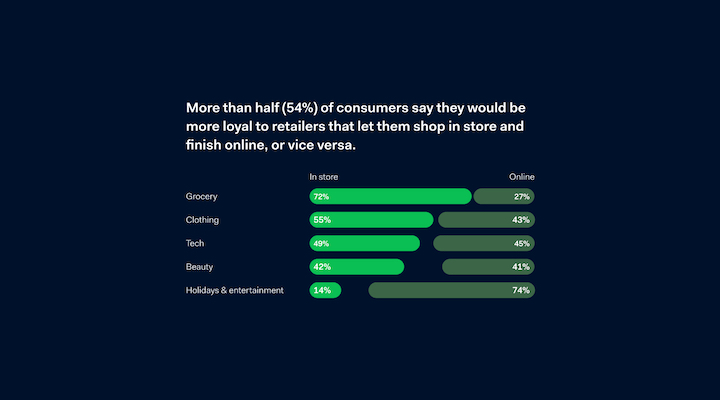Recent research by Adyen has found that rising inflation rates are continuing to put pressure on retailers and consumers alike, affecting how and when they spend.
The finding is one amongst several important insights impacting the post-pandemic retail environment revealed in this year’s Adyen Retail Report, an annual guide to major trends bearing impact on businesses across the globe – examining both consumer behaviours and the possibilities presented by financial technology. The report is based on business and consumer data sourced from more than 12,000 businesses and 36,000 consumers around the world.
“Rising inflationary pressures have made consumers more cautious with their spending,” says Priyanka Gargav, Adyen’s country manager Singapore and head of commercial SEA and Hong Kong. “As rent and living expenses surge, many shoppers are adjusting their purchasing habits accordingly. In Singapore, for example, 48 per cent of consumers have revealed they are spending more time hunting for deals, making them the most bargain-conscious in the Apac region.”
Retailers in Singapore and throughout the region are having to adapt to these changing behaviours by offering competitive pricing strategies as well as capitalising on the seasonal shopping events that 40 per cent of respondents now say they time their purchases around, such as the popular 11/11 Singles Day and the Great Singapore Sale.
With 67 per cent of consumers now wanting to see their favourite brands offering more personalised discounting, retailers need to be better attuned to changing shopper priorities if they hope to secure their loyalty.

Shoppers expect more choice for their loyalty
The Adyen report implicates a shift in consumer demand for more choices in return for loyalty. Under pandemic-driven industry digitalisation and the increased expectations amongst shoppers that came out of that time, retailers now need to differentiate themselves by delivering memorable, trustworthy, and personalised shopping experiences.
“Add inflation and rising costs to the mix, and it’s now more important than ever to stay memorable, trustworthy, and competitive with personalised shopping experiences,” says Gargav. “By leveraging technology and data-driven insights, retailers can tailor their offerings to individual customer preferences, fostering loyalty and standing out in a crowded market.”
Sales channels and fresh opportunities via unified commerce
Connecting online and in-store sales channels through a unified commerce system – such as Adyen’s own payments platform – presents a significant opportunity for retailers to capture robust shopping data in a market sector worth US$70.9 billion. Recognising that consumers do not think in terms of separate sales channels, successful retailers are seeing strong results in integrating their frontend and backend systems into single payment platforms. This follows data showing how consumers want a much more unified shopping experience between online and offline channels – in Apac, for example, 54 per cent of consumers are more loyal to retailers that allow them to shop in store and finish the purchase online or vice versa.

“When payment data from all sales channels are processed on the same platform, you get a unified view of all your shoppers,” explains Gargav. “Using identifiers in payment data, retailers can gain insights into customer trends and behaviours, track performance across channels and regions and make informed business decisions, such as seeing how opening a store might impact e-commerce sales in that area.”
Unified commerce makes it easy to track customer behaviour and assign loyalty points, whether they’re buying online in Singapore or in a store in New York. Adyen’s solution accomplishes this through tokenization, which attributes a unique shopper reference number to the payment card that is captured during an initial purchase and used to connect subsequent purchases to the same customer in a secure and seamless way.
A unified cross-channel shopping experience
While brick-and-mortar retail is now experiencing a strong resurgence, Adyen’s data concerning consumer preference for more unified shopping experiences call for a significant advancement beyond the concept of omnichannel in the retail industry. Unified commerce systems act as a strategic revenue driver by consolidating stock management, customer data, and payment processes into a single platform. This cohesive approach offers enhanced flexibility for customers and provides retailers with richer, more holistic insights, enabling them to swiftly adapt to evolving market demands – effortlessly incorporating new channels and supporting diverse customer journeys.
“This approach enables a seamless customer experience across various touchpoints and provides valuable data for customer management, supply chain optimisation and fulfilment processes,” says Gargav. “By embracing unified commerce, retailers can streamline their operations and enhance efficiency, ultimately driving growth and profitability.”
By embracing unified commerce, retailers can streamline their operations, improve customer satisfaction, and maintain agility in the ever-shifting retail landscape.
For more local insights and to read the Adyen retail reports for Singapore, Hong Kong and Malaysia (coming soon), click here.






